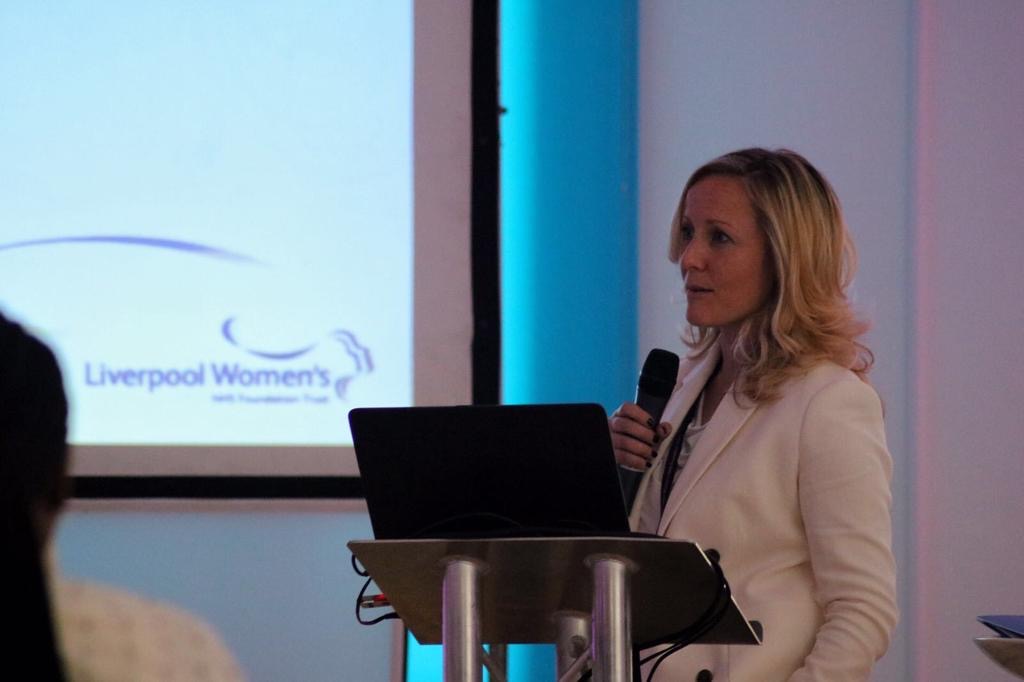World first AI-based tool developed for cervical cancer treatment
The Clatterbridge Cancer Centre has partnered with Canadian software company Limbus AI
The Clatterbridge Cancer Centre in Liverpool has partnered with Canadian software company Limbus AI to trial and co-develop the world’s first commercial AI-based auto-contouring tool for a specialist cervical cancer treatment known as brachytherapy.
Brachytherapy is a type of radiotherapy that involves placing an intense radiation source inside or in close contact with tumour cells. This makes it particularly well suited to treating tumours in particular parts of the body such as the cervix. Although it is highly effective, some patients can find cervical brachytherapy uncomfortable as it involves lying flat for several hours with an applicator in place so clinical teams and physicists can plan and deliver the treatment.
Using an AI-based tool to reduce the length of time this takes could therefore significantly benefit patients as well as the professional teams involved. Yet, although these tools have been used for some years in traditional radiotherapy planning, until now there has been nothing similar available for cervix brachytherapy patients – arguably, the group that would benefit from it the most.
Clinicians and clinical scientists (physicists) at The Clatterbridge Cancer Centre in Liverpool – which in 2019 was one of the first UK hospitals to use AI in radiotherapy treatment planning – spotted this gap and approached contacts at Limbus AI to suggest collaborating on a solution.
The two organisations have worked together to develop and test the world’s first commercial AI-based auto-contouring software modules for cervix brachytherapy. The tool has been successfully trialled at The Clatterbridge Cancer Centre and other hospitals and has just been launched commercially in the UK for use in clinical practice.
It works by recognising and automatically outlining important organs in the body on MRI scans. Cervix brachytherapy is a complex process because every patient has their own unique treatment plan, carefully designed to target their cancer and protect other critical body organs from radiation.
It is a day case procedure that begins with the patient having an applicator inserted in theatre under general anaesthetic. Once recovered, they have an MRI scan that creates a slice-by-slice view of their cancer and the vital organs around it so clinicians and clinical scientists can create their treatment plan. The radiation treatment is delivered through the applicator and then the applicator is removed.
‘Contouring’ is a key part of the treatment planning process. It is traditionally done by an oncologist who must painstakingly go through every slice of the MRI scan and outline the critical body organs so they can be protected during treatment. This can take over an hour.
Although AI-based software already helps reduce this time in traditional radiotherapy planning by automatically outlining organs for clinicians to review and refine, this wasn’t the case for cervix brachytherapy.
Early clinical experience of the new AI-based tool at The Clatterbridge Cancer Centre indicates an average time saving of around 13 minutes per treatment plan. As every patient needs three brachytherapy treatments, this could represent a significant improvement in patient experience. The total time saved for clinicians will also be significant.

Rhydian Caines, Principal Clinical Scientist at The Clatterbridge Cancer Centre, said:
“As a clinical team we are keenly aware that brachytherapy can be a difficult experience for patients and were frustrated that we couldn’t find an auto-contouring solution for brachytherapy, despite this technology being available in more traditional radiotherapy settings.
“The team at Limbus AI have been fantastic in answering our ‘call to action’ on this, and it has been a thrill to collaborate with them on bringing this system into existence.
“It’s early days and we’ll be continuing to work with Limbus on refining the AI models but we are encouraged by our early timing data and hope this will translate into an improved experience for our patients and those in lots of other cancer centres as well.”
Dr Anthea Cree, Consultant Clinical Oncologist at The Clatterbridge Cancer Cere, said:
“It’s brilliant that this is now available for cervical brachytherapy. Obviously it still needs to be checked by clinicians but it means we don’t have to do all the outlining from scratch. The accuracy is particularly good for the bladder which means I can focus more on other areas.
“Rhydian and our Brachytherapy team are very innovative and worked closely with Limbus AI to help develop this. It’s a privilege to work with such a forward-thinking team who are always looking at how we can improve things for our patients.”
Kevin Riddell, Limbus AI Product Manager, said:
“It’s been fantastic to work with Rhydian and the entire team at The Clatterbridge Cancer Centre, along with our other global partners, to bring this technology to patients.
“As a company founded by current and former radiation oncology clinicians, we share a common mission to create solutions that directly benefit cancer patients. We’re thrilled to see it making a real difference at The Clatterbridge and other centres around the world.”




